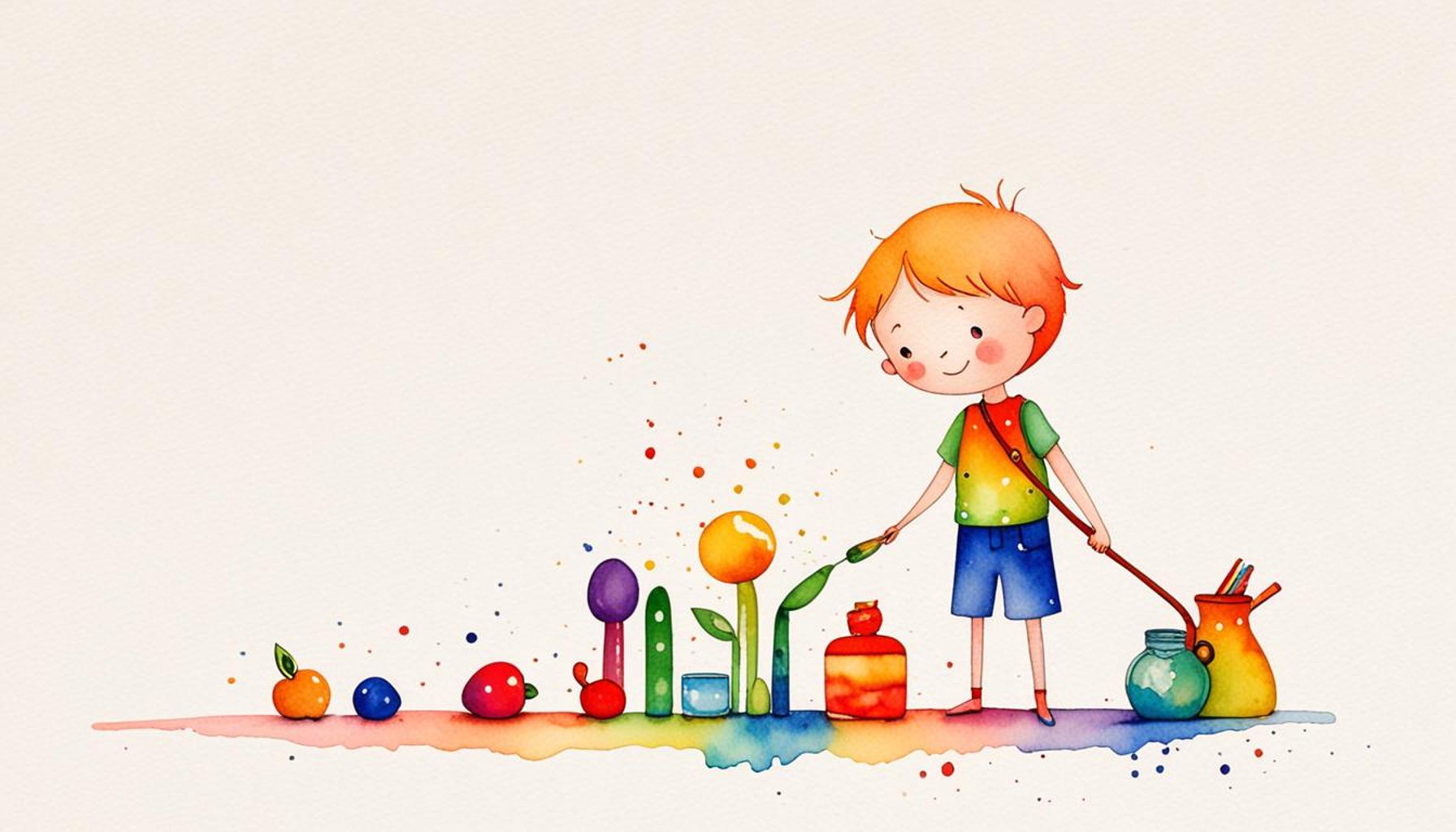Living Intentionally with Children: Teaching Values of Minimalism and Simplicity

Embracing a New Lifestyle
In a world saturated with consumerism, finding clarity for your family can feel overwhelming. The constant influx of advertisements, the push for the newest gadgets, and the rising trend of social media can create a chaotic environment where material possessions seem to define success and happiness. Living intentionally has become increasingly crucial for parents who wish to impart values that transcend the allure of these things. Teaching our children the principles of minimalism and simplicity offers not only a clearer home environment but also a more focused and fulfilling mindset.
One of the key aspects of embracing minimalism is encouraging mindfulness in daily choices. This can mean taking moments as a family to reflect on what items are essential and how they fit into your lives. For example, before heading to the store, discussing what you truly need—not just what you want—can teach children to think critically about consumption. It’s about cultivating awareness rather than mindlessly accumulating possessions.
Additionally, fostering an appreciation for experiences over things is a powerful lesson. Instead of defaulting to buying a new toy, consider planning an outing, such as a visit to a local museum or a nature hike. These experiences can create lasting memories that enrich family bonds without adding to the clutter at home. A 2021 survey found that families who prioritize experiences reported higher levels of happiness and satisfaction, reinforcing the value of spending quality time together over focusing on material goods.
- Reducing clutter to create a serene living space is another fundamental step in the journey to minimalism. Families can implement regular decluttering sessions to keep their home organized and free from unnecessary items. This not only fosters a more peaceful environment but also encourages children to understand the importance of maintaining their space.
Practical strategies for fostering a minimalist mindset can start small, engaging children in practices such as:
- Regular decluttering sessions where each family member analyzes their belongings and chooses what to keep, donate, or discard.
- Mindful shopping practices, such as creating a shopping list before heading out and pledging to stick to it.
- Classifying toys and belongings to keep only what is necessary and meaningful, which reduces distractions and promotes focus.
Moreover, it’s essential to instill the understanding that simplicity can enhance overall well-being. Research indicates that living with less clutter can lead to reduced stress levels and improved focus, creating a more harmonious family life. By exploring the values of minimalism together, not only do we teach our children vital life skills, but we also pave the way for a sustainable future. Children learn that happiness doesn’t come from possessions but from the relationships they cultivate and the experiences they share. This mindful approach can foster responsible future consumers who value quality, sustainability, and meaningful connections over transient desires.

DIVE DEEPER: Click here to discover the importance of intention in minimalism
Practical Steps to Cultivate Minimalism and Simplicity
Embracing a minimalist lifestyle with children requires practical strategies that are both engaging and educational. To instill the values of minimalism and simplicity effectively, parents can adopt a range of activities that not only teach children the significance of these principles but also foster family bonding. It is essential to integrate these practices into daily life, making mindfulness a natural part of the family culture.
First and foremost, creating a designated space for decluttering activities can make the process less overwhelming and more inviting for children. Parents can set aside a specific day each month for a family declutter day, where everyone participates in reviewing their belongings. This can turn into a fun challenge where each family member aims to find a certain number of items to donate. Such practices not only physically clear the space but also allow children to grasp the concept of letting go. They learn that items can find new homes where they may be more valued.
Encouraging children to engage in mindful purchases also plays a vital role in shaping their understanding of value over volume. Families can implement a rule that larger purchases are discussed collectively. For instance, if a child expresses the desire for the latest video game console, parents can use that moment to discuss the family’s values around entertainment and spending. Questions like, “What makes this game special to you?” or “How many hours do you think you will play it?” can lead children to reflect on their decisions before making a purchase.
- Creating a Wish List: Encourage children to maintain a wish list for the items they genuinely want rather than encouraging impulsive buys. This can be a shared document or a physical list that they can check back on to assess if they still want those items later.
- Experience Over Items: Whenever possible, prioritize experiences. Plan family activities that align with your values, such as volunteering together, visiting new parks, or exploring educational resources—activities that build memories rather than accumulating things.
- Conversation about ‘Needs vs. Wants’: Have conversations to differentiate between needs and wants. Through discussion, children can grasp the notion of necessity, which can prevent unnecessary purchases and help them internalize these values in the long run.
Moreover, teaching children about sustainability can intertwine beautifully with minimalism. The connection between minimalism and sustainability revolves around making choices that reduce consumption and waste, ultimately leading to a healthier planet. By linking their own consumption habits to larger environmental impacts, children can learn to appreciate sustainability not just as a concept but as a guiding principle in their daily lives.
It’s important to recognize that the journey toward minimalism is a gradual process, and reinforcing these values will reap rewards over time. Through regular repetition and conversation about the virtues of simplicity, children can cultivate a mindset that values quality over quantity and strengthens their ability to make intentional choices. This holistic approach not only equips children with practical skills but also establishes a nurturing environment where simplicity thrives.
| Advantages | Details |
|---|---|
| Encourages Mindful Consumption | Children learn to appreciate quality over quantity, fostering an understanding of value vs. excess. |
| Builds Stronger Family Bonds | Minimalism encourages shared experiences over material possessions, promoting quality time among family members. |
Integrating the principles of minimalism into daily family life creates an environment where children can thrive in simplicity. When children learn to focus on meaningful relationships rather than accumulating possessions, it cultivates an appreciation for what truly matters. This practice not only enhances their personal growth but also enhances their emotional intelligence as they navigate relationships with empathy and understanding.Moreover, instilling values of sustainable living sets a precedent for responsible behavior. Teaching kids to respect the environment by choosing eco-friendly options not only lowers their ecological footprint but also fosters a sense of responsibility towards the planet. As they grow, these lessons can transform them into conscientious adults who prioritize sustainability in their lifestyles.Additionally, adopting minimalism helps reduce distractions, allowing children to engage in creative activities and experience greater focus. This laser focus enhances learning and the ability to develop skills that matter, such as problem-solving and critical thinking. Diving deeper into these practices can reveal effective strategies for promoting intentional living.
DISCOVER MORE: Click here to learn expert tips
Fostering a Mindful Family Culture
To effectively teach children the values of minimalism and simplicity, parents must create a family culture that prioritizes mindfulness and intentional decision-making. This journey involves more than just decluttering; it requires a thoughtful approach to how families interact with their environment, their belongings, and each other.
One strategy to cultivate mindfulness is through family discussions centered on gratitude. By regularly sharing what each family member appreciates, children can learn to value what they already have instead of constantly seeking more. Consider establishing a nightly ritual during dinner where everyone takes turns mentioning one thing they are grateful for that day. This practice not only nurtures a positive mindset but reinforces the idea that joy can be found in simplicity and presence.
Incorporating mindfulness practices into daily routines can further promote a minimalist mindset. Parents might introduce activities like yoga or meditation, which encourage calmness and focus. For example, short, guided sessions focused on breathing can help children learn to center themselves and appreciate stillness, counteracting the noise of consumerism and the fast-paced world around them. Apps designed for children, such as Stop, Breathe & Think Kids, can serve as helpful tools to facilitate these practices.
Moreover, storytelling and literature can play a significant role in teaching simplicity and minimalism. Reading books that emphasize minimalistic lifestyles or the beauty of simple living can inspire children to embrace these values. Titles such as “The Simple Gift” by Steven Herrick or “Less is More” by Kimberly & James Dean provide relatable narratives that engage children while prompting discussions about the benefits of a minimalist lifestyle. Parents can create a reading corner in their homes, providing a space that values knowledge and reflection over material possessions.
- Introduce Simple Family Projects: Engage children in family projects that emphasize simplicity, such as gardening. Learning to grow food not only teaches patience and care but also demonstrates the fulfillment derived from simplicity and nature. Children can gain a real sense of accomplishment and learn the value of nurturing something tangible.
- Seasonal Celebrations: Hone in on celebratory moments throughout the year that focus on experiences rather than material gifts. For instance, during birthdays or holidays, consider creating family traditions that revolve around activities, such as a day of volunteering instead of physical gifts, thus reinforcing the importance of togetherness and gratitude.
- Encouraging Creativity: Promote creative expression using limited materials. Whether through art projects with recycled materials or storytelling sessions using imagination rather than props, this approach not only nurtures creativity but emphasizes that joy can be derived from minimal resources.
Additionally, teaching children about the impact of consumerism on the planet can elevate their understanding of sustainable living as a component of minimalism. Engaging them in discussions about environmental issues, like plastic pollution or overconsumption, encourages them to connect their personal choices to a broader context. Educational trips to eco-friendly farms or recycling centers can serve as real-world examples of simplicity and sustainable practices in action.
As families navigate these initiatives, they create a community that celebrates intentional living. By embedding these principles into the fabric of daily life, parents foster a nurturing environment where children can grow up recognizing the beauty of a simple, intentional life.
DISCOVER MORE: Click here to learn about intentional living’s role in sustainability
Embracing a Simpler Life Together
As we explore the enriching journey of living intentionally with children, it becomes clear that instilling the values of minimalism and simplicity can profoundly shape their worldview. By fostering a family environment that prioritizes mindfulness, gratitude, and intentional decision-making, parents equip their children with the tools to navigate an increasingly complex society. The practice of regularly engaging in meaningful conversations, nurturing creative expressions, and embracing nature strengthens familial bonds while emphasizing the joy found in simplicity.
Your efforts to demonstrate the benefits of a minimalist lifestyle—whether through shared rituals, educational experiences, or collaborative projects—serve as powerful lessons. Emphasizing experiences over possessions can teach children to value relationships and cultivate a sense of community, ultimately fostering a resilient mindset that appreciates the present moment.
Furthermore, as young minds soak in the significance of sustainability and environmental stewardship, they are primed to become conscientious citizens of the world. In essence, teaching children about the beauty of living intentionally not only simplifies their lives but also empowers them to make choices that honor both themselves and the planet.
In conclusion, embarking on this path of intentional living is not merely about decluttering physical spaces; it is about enriching hearts and minds. As you nurture a family culture steeped in values of minimalism and simplicity, you’ll be forging a legacy of mindfulness and purpose that will resonate throughout their lives. The beauty of simplicity awaits—will you and your family take the first step?


